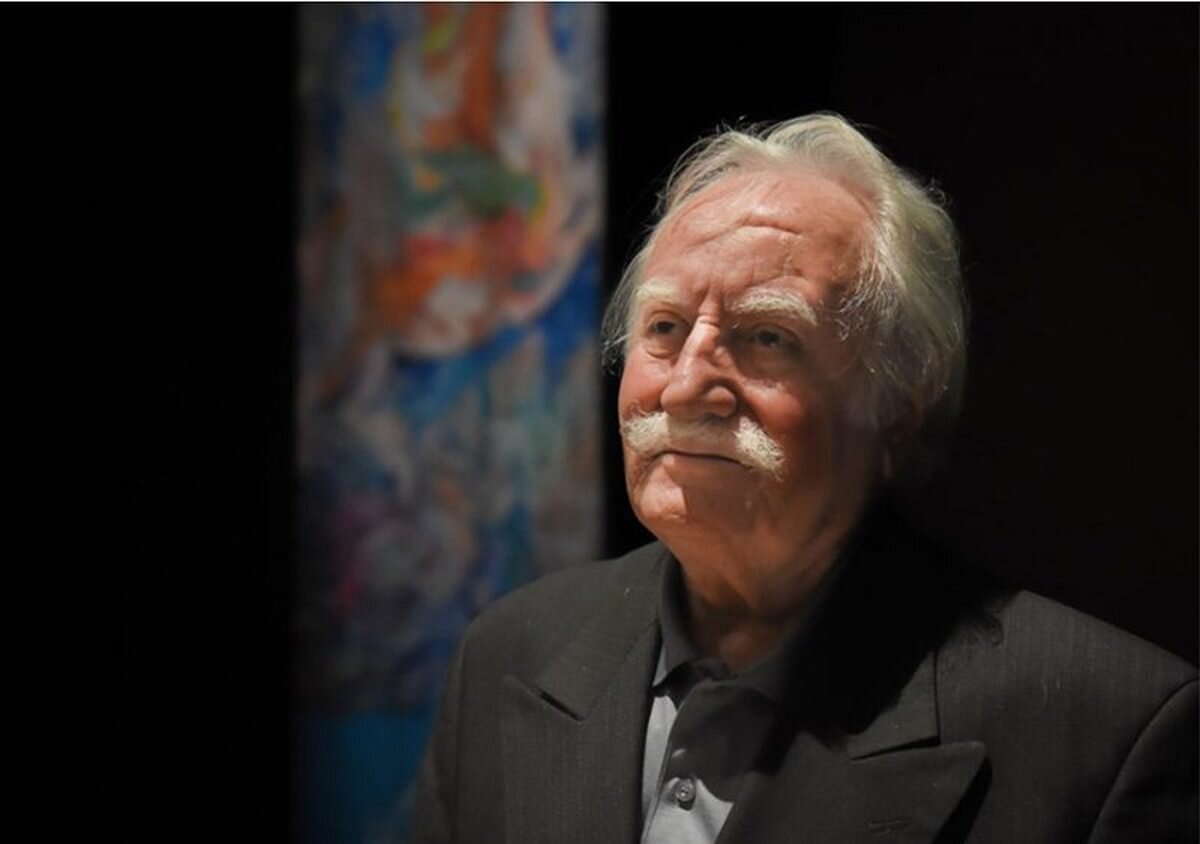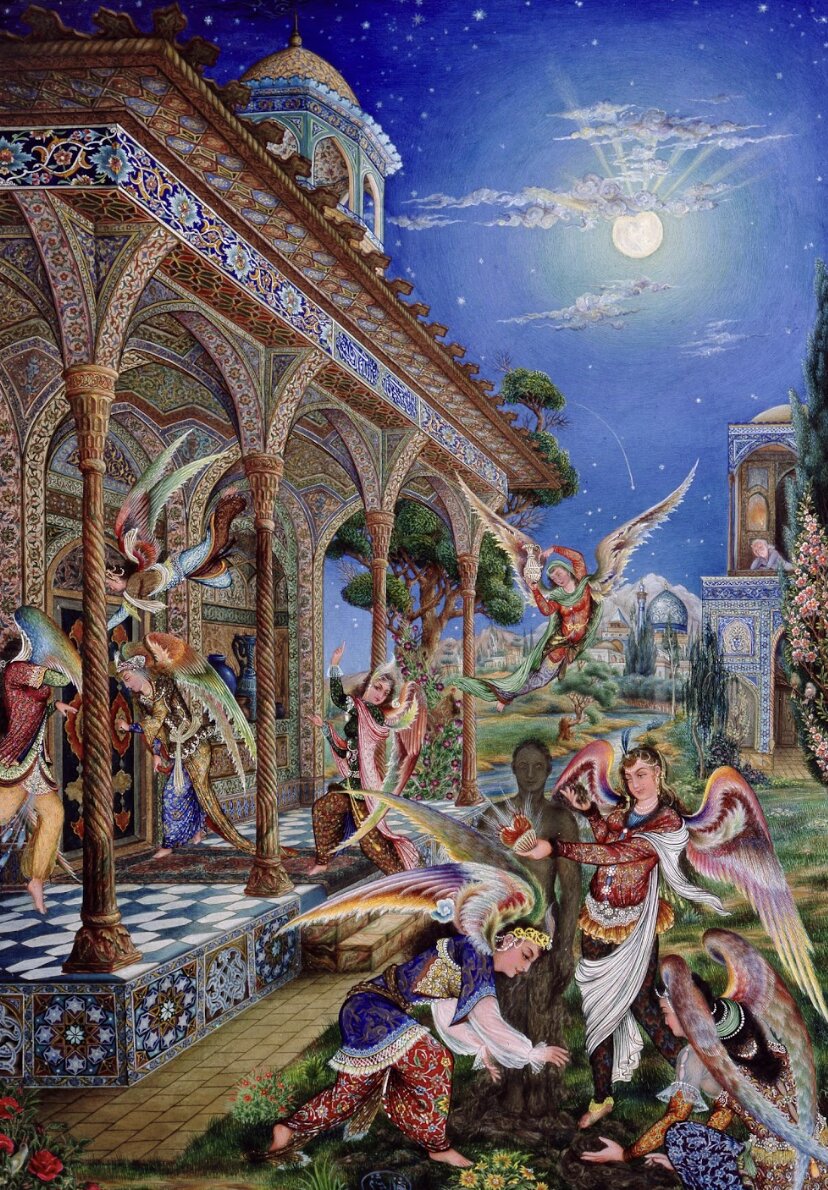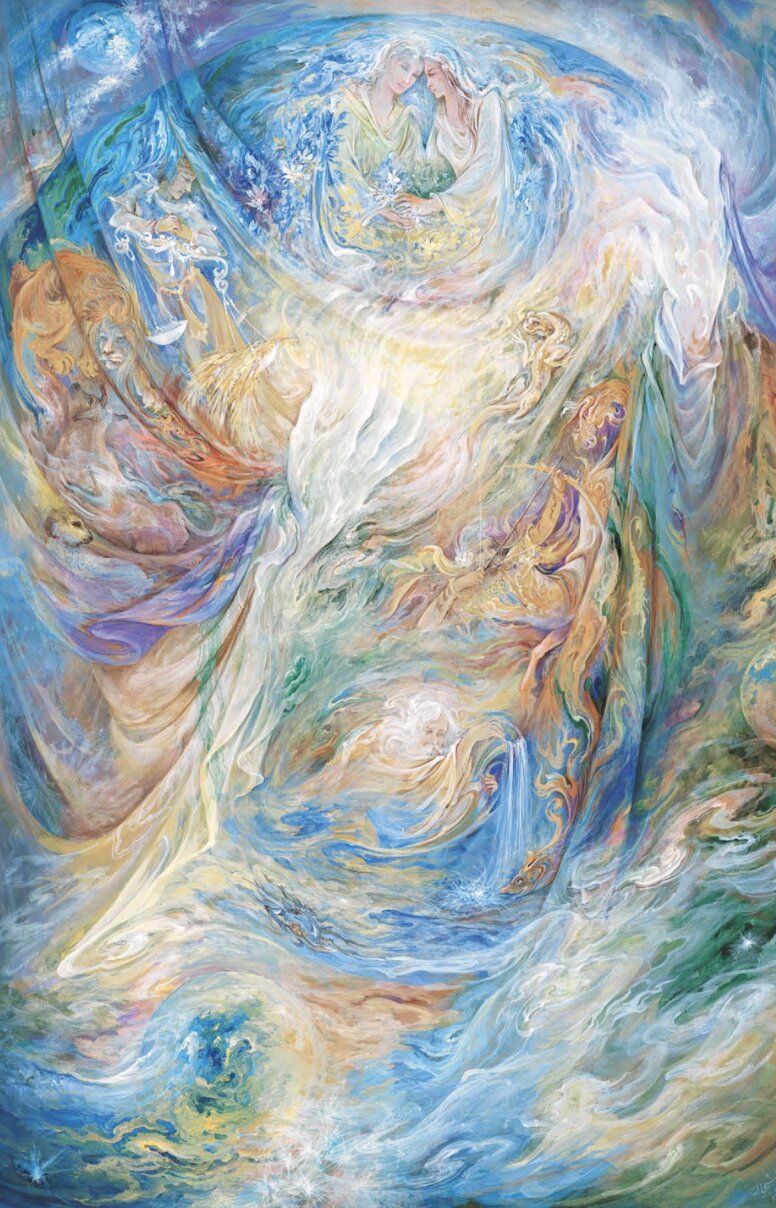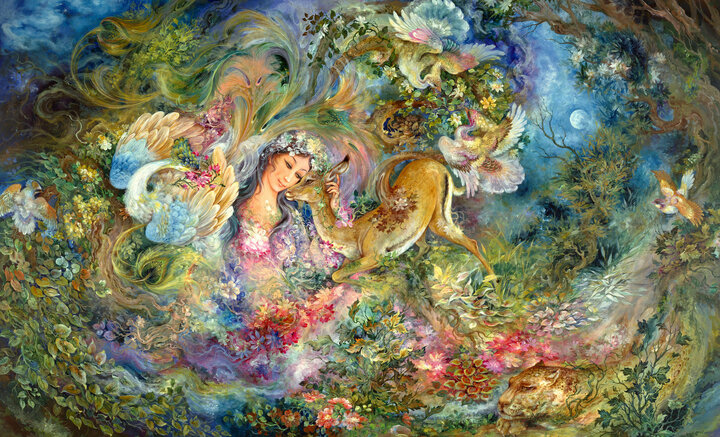Farshchian's natural genius was nourished by his family’s deep appreciation for art in all its forms. Farshchian's family home in the Ahmadabad neighborhood of Isfahan included trees, water fountains, pools, and a section called the Chicken House. His childhood memories of playing with the hens, roosters, pigeons, and sparrows are evident in his masterful depiction of their colors, feathers, and movements.
Beyond their physical appearance, Farshchian paid keen attention to their different moods and personalities. “There was this particular white rooster that was so friendly with me,” he remembers. “I carried food for him in my pocket, and he would push his head into my pocket and eat them.”
Farshchian’s father Gholamreza was a successful Persian carpet dealer, and the home was furnished with antiques, Cretonne curtains, and many carpets woven by the masters Archang (Ahmad Hartamni) and Mirza. Father would sit, arms crossed, watching in silence for hours as his young son drew the carpets’ lines and patterns. He would just look at me from the corner of his eyes. It was then that I realized the effects of my passion for art in my life.
“I get my art-loving spirit from my father. Although he was a businessman and trader, he admired art....That’s how I developed my passion for art.”
-M.F.

Farshchian’s parents shared a genuine love of God and religion. His mother Zahra would take her children to the Imamzadeh Ismael shrine near their house, where Farshchian would make pencil copies of the shrine’s many paintings of events of Karbala and Ashura. The shrine had a plane tree that was burnt from inside, an image that appears in many of Farshchian’s paintings. A pilgrimage to Karbala in the 1940s affected Farshchian deeply, as revealed in his designs for the new tomb of Imam Hussein decades later.
Farshchian studied with the greatest masters of Persian art and literature in Isfahan. At Golbahar, the prestigious public school he attended, his teachers praised Farshchian’s artistry and encouraged him to study with Haj Mirza Agha Emami, an artist, carpet designer, and giant of Iranian Modernism. Farschian so impressed Haj Mirza with his talent, passion, and humility that he agreed to train the young student.

Haj Mirza taught Farshchian how to draw a gazelle. “When I got home, I was so excited,” Farshchian recalls. “I stayed up all night and drew about 200 gazelles: big ones, little ones....I felt like something was changing within me.” The next day, he took his portfolio to show the gazelles to Haj Mirza, who could not believe his eyes. He asked if Farshchian had drawn them all by himself or if he had traced them. “No, sir, I’d never do that. I just drew them,” Farshchian answered. Haj Mirza instructed Farshchian to draw a gazelle in his presence. After finishing quickly, Haj Mirza kissed him on the forehead and said, “You’ll become great! Work hard.”
Farshchian became Haj Mirza’s apprentice and continued to draw in pencil for four more years, mostly emulating Timurid and Safavid drawings. Then Farshchian began to study painting. Eventually, the precocious boy was helping carry out the studio's commissions. The gazelle still holds a special place in Farshchian’s heart and appears throughout his body of work.
Farshchian next attended the School of Fine Arts in Isfahan, where he kept the following sentence framed above his desk: “I should become a genius.” He studied miniature painting, drawing inspiration from the designs and tile patterns of Isfahan’s architectural monuments. Farshchian mastered the intricacies of pigments, binding mediums, and prepared his own brushes from white kitten hairs tied into bird quills tools so fine and flexible that he still uses them for delicate passages. Farshchian learned carpet design from the late master Issa Bahadori, who taught “with passion and love.” Farschian’ s artworks were gifted to every celebrity or diplomat who visited Iran.

Upon graduation from the School of Fine Arts, Farshchian held his first solo exhibition in 1948 at the Iranian-British Cultural Association’s office in Isfahan.
He is included in Cambridge University’s list of the 2000 outstanding intellectuals of the 21st century and The European Academy of Culture’s Who’s Who in the 21st Century. Farshchian belongs to the Art and Professions Association of Italy and has received numerous awards and honorary memberships from universities and art centers across Europe and the USA.
Farschian’s paintings are in the private collections of H.R.H. Queen Elizabeth II of England and Prince Philip, Queen Juliana of Netherlands, Prince Agha Khan, Crown Prince Akihito of Japan, former presidents and prime ministers of the US, France, Italy, Brazil, and India, William Fulbright, Arthur A. Pope; and Michael Jackson, among others.
There have been six books and countless articles published on his work, as he comes to be recognized as playing a decisive role in introducing Iranian art to the international art scene as well as broadening the possibilities and scope of traditional Iranian painting.
In 2001, The Farshchian Museum opened to the public in Isfahan. His works are also permanently installed in Farshchian Hall at The Astan Ghods Razavi Museum and in the Museum of Contemporary Arts, Mashhad.



Your Comment